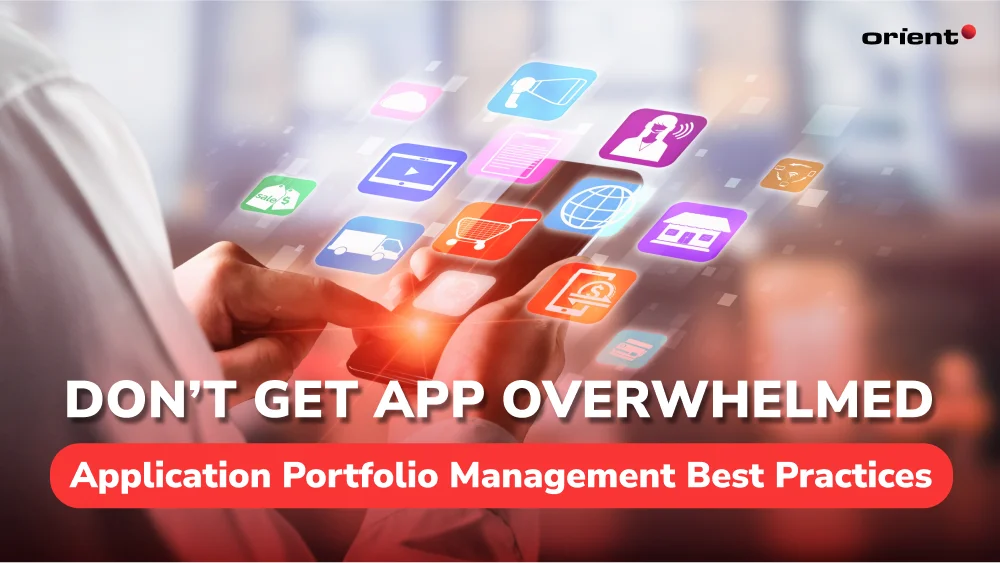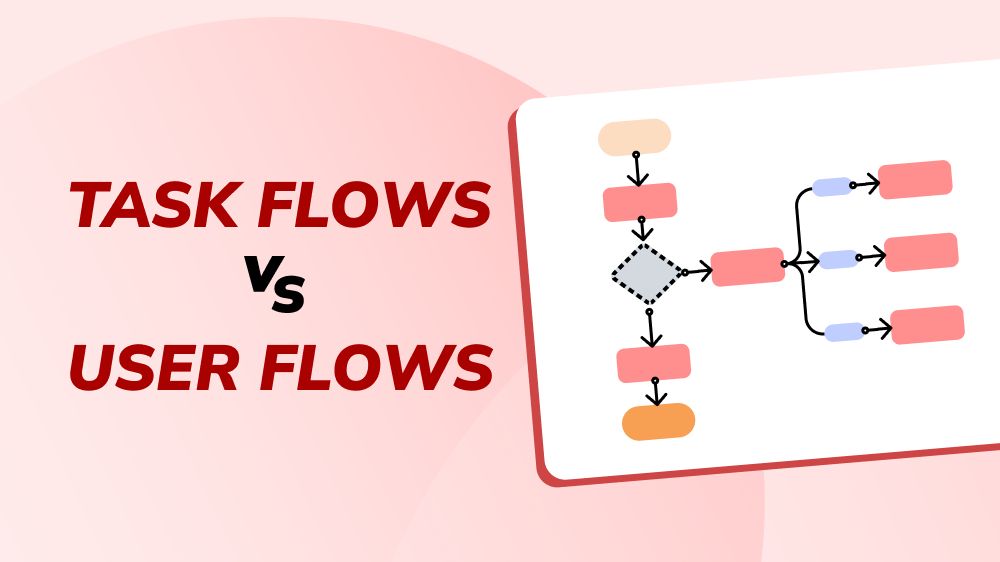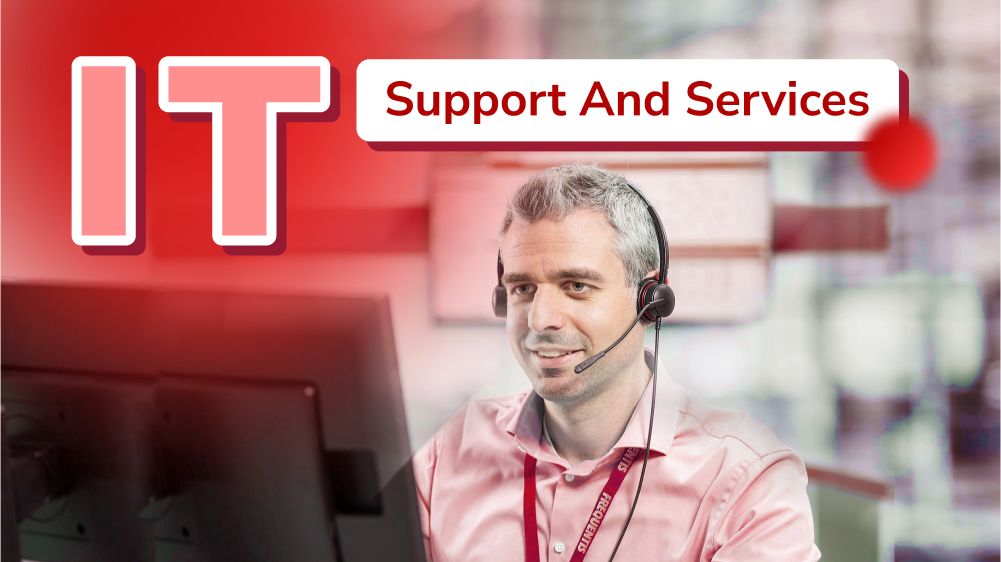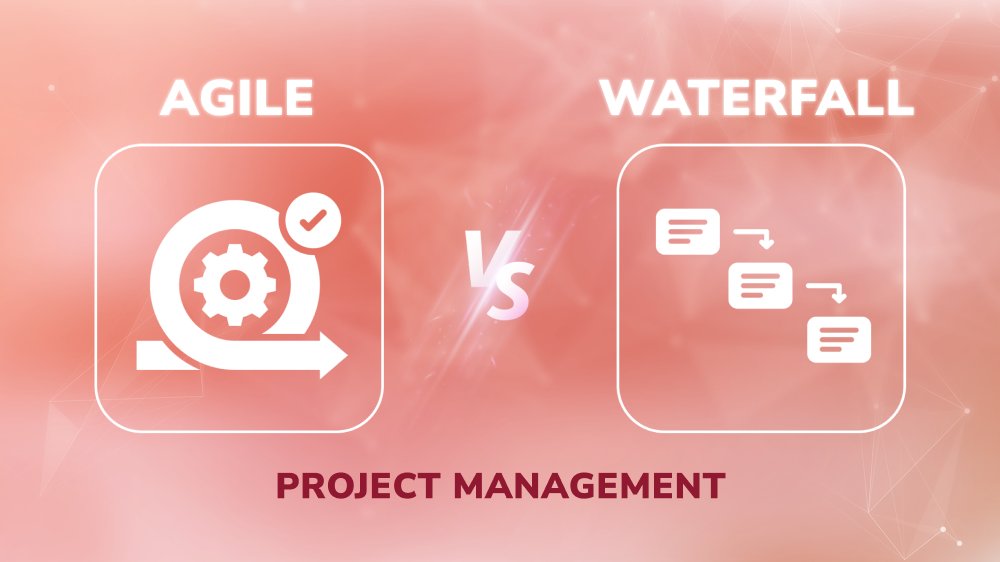Don’t Get App Overwhelmed: Application Portfolio Management Best Practices

Content Map
More chaptersThe digital age has unleashed an explosion of app development across enterprises. As recently as 2015, the average large company operated around 10 applications—that number has since ballooned to over 130, according to recent surveys.
While this app proliferation fuels innovation, it also breeds inefficiency and technical debt. Without careful management, application sprawl degrades user experience, increases security risks, and stifles productivity through disjointed systems.
To avoid becoming app victims, businesses urgently need a cure: application portfolio management (APM). APM principles help rationalize existing assets while guiding investment in new apps aligned with goals. In this guide, we outline application portfolio management best practices like application review, application rationalization, lifecycle management, version control and more.
Learn how APM oversees app health for a unified digital future. It’s time to get from overwhelmed to well-managed.
Key Takeaways:
- Application Portfolio Management (APM) provides the framework to organize and optimize your software landscape. By creating a comprehensive application inventory, you gain control, identify redundancies, and ensure your applications align with business goals.
- Don’t let your application portfolio become stagnant. Regular reviews ensure applications remain relevant and identify opportunities for consolidation, retirement, or upgrades. This proactive approach keeps your application landscape efficient and cost-effective.
- Your application portfolio should be a strategic asset driving business success. Integrate APM with your overall business goals, ensuring applications directly support your objectives. By incorporating stakeholder feedback, you prioritize applications that deliver the most value to your organization.
Get to Know Application Portfolio Management (APM)
Application Portfolio Management (APM) is a strategic approach that involves the comprehensive management and evaluation of an organization’s collection of applications. It encompasses the processes, methodologies, and tools used to assess, analyze, and govern the entire application portfolio throughout its lifecycle. APM is a part of the broader field of enterprise architecture, which maintains information about the organization’s assets, both hardware and software.
The primary purpose of application portfolio management solutions is to align IT investments with business capabilities and provide organizations with a clear understanding of their application landscape, including the functionality, value, and interdependencies of each application. It allows organizations to make informed decisions regarding application investments, rationalization, modernization, and retirement. By gaining visibility into the application portfolios, business leaders can align their IT resources with business objectives, reduce costs, enhance efficiency, and drive innovation.
Without effective APM, organizations can face several challenges and risks. One of the main risks is application overload, where the organization has more applications than it needs, leading to unnecessary complexity and cost. This can also lead to a lack of standardization, where different parts of the organization use different applications for the same purpose.
Furthermore, without application portfolio management tools, it can be difficult to align IT with business needs, as there is no clear understanding of how applications support business capabilities. This can lead to poor investment decisions where money is wasted on applications that do not add value to the business, making application portfolio management important for strategic planning.
Key Components of Application Portfolio Management
Building a successful APM strategy hinges on three crucial components: application inventory, classification & categorization, and assessment & prioritization.
Application Inventory
The foundation of any effective APM program is a comprehensive application inventory. It involves creating a comprehensive list of all applications within an organization’s IT landscape. This inventory serves as a single source of truth about the applications used by different business units.
Why is having a complete inventory so crucial? Firstly, it provides visibility into the applications that are supporting business capabilities, their interdependencies, and data flows. This visibility allows organizations to identify redundancies and opportunities for consolidation. Secondly, it assists in tracking application lifecycles, including licensing renewals, upgrades, and potential retirements. Finally, a comprehensive inventory is essential for cost management, ensuring accurate budgeting for application licenses and maintenance fees.
Building a robust inventory requires a multi-pronged approach:
- Stakeholder interviews: Engaging with business users, IT teams, and other stakeholders can help identify applications that are currently in use. This involves gathering information about applications, their purpose, functionality, and dependencies.
- Application discovery tools: Automated tools can scan the organization’s network and systems to identify applications actively being used. These tools can provide insights into application usage, versions, and interdependencies.
- Documentation and documentation review: Reviewing existing documentation, such as system documentation, IT asset registers, and project documentation, can help identify applications that may have been overlooked.
Application Classification and Categorization
Once applications are documented, the next step is to organize them for better management. This is achieved through classification and categorization.
- Classification Strategies: Strategies for classifying applications include using business capability maps to understand how applications support business capabilities and categorizing applications based on their technical characteristics. Applications can be classified as strategic (essential for core operations), tactical (supporting specific business functions), or operational (used for everyday tasks). Additionally, classification can consider factors like usage patterns and identifying high-volume applications that require performance optimization.
- Categorization Approaches: Categorization involves grouping applications based on shared characteristics. Common approaches include grouping by functionality (e.g., CRM, Marketing Automation), technology stack (e.g., Cloud-based, On-premise), or deployment model (SaaS, PaaS). This organization allows for easier tracking of trends and resource allocation based on technology expertise and facilitates cost comparisons between similar applications.
Application Assessment and Prioritization
With the applications categorized and classified, it’s time to delve deeper into their value and performance. Application assessment involves evaluating each application based on predefined criteria.
Key metrics for assessment include business value and the application’s contribution to achieving strategic objectives. Cost is another critical factor, encompassing license fees, maintenance costs, and ongoing development needs. Additionally, the technical health of the application is assessed, considering factors like technical debt and the accumulated impact of past technical decisions that can hinder performance.
Based on the evaluation results, applications are prioritized for further action. Some techniques for prioritizing applications include:
- Value vs. effort matrix: Plotting applications on a matrix based on their business value and effort required for maintenance, enhancement, or retirement. This helps identify applications that offer high value with low effort, as well as those that may require significant effort but offer limited value.
- Risk-based prioritization: Assessing applications based on their potential risks and impact on critical business functions. Applications with high risk or potential for disruption may be prioritized for maintenance or retirement.
- Return on investment (ROI) analysis: Evaluating applications based on their potential return on investment, considering factors such as cost savings, revenue generation, or efficiency improvements.
These three key components of APM help organizations manage their application portfolios effectively, ensuring strategic alignment between IT and business, optimizing IT costs, and enabling informed decision-making.
Best Practices for Application Portfolio Management

Now that we’ve explored the key components of APM, let’s delve into the practical steps you can take to optimize your application portfolio. Effective application portfolio management begins with a complete understanding of the applications in use. Here are some best practices to ensure your APM efforts deliver maximum value:
Regular Application Review
An APM program is not a one-time event. Periodic assessment and review of applications are essential to maintain a healthy and efficient portfolio.
The application landscape is constantly evolving. New technologies emerge, business needs shift, and application functionality can become outdated. Regularly reviewing applications allows you to identify these changes and adjust your portfolio accordingly. This proactive approach ensures applications remain aligned with business objectives and minimizes the risk of clinging to outdated or redundant tools.
Formalize application review by setting a defined schedule. This could be quarterly, biannually, or based on specific business cycles. Develop a standardized review process that involves key stakeholders from IT and business departments. This process should leverage data from the application inventory and assessment findings to make informed decisions about each application’s future.
Application Rationalization
Through ongoing review, you’ll inevitably identify applications that no longer serve a valuable purpose. Application rationalization involves streamlining your portfolio by addressing these underutilized or outdated tools.
Leverage the insights from your application classification and assessment to pinpoint applications with low usage, high costs, or significant technical debt. Additionally, look for redundancies, where multiple applications offer similar functionalities.
There are several approaches to dealing with underutilized applications. Retirement involves decommissioning the application altogether. This is ideal for applications with no remaining business value or those posing security risks. Alternatively, consider consolidation. If multiple applications offer overlapping functionalities, explore merging them into a single, more efficient tool. This reduces licensing costs and simplifies the application landscape for users.
Lifecycle Management and Version Control
Maintaining a healthy application portfolio requires lifecycle management and version control practices.
Implement a version control system to track changes made to applications. This ensures developers can revert to previous versions if necessary and facilitates collaboration on updates. Additionally, a formal release management process must be established to ensure new application versions are thoroughly tested and deployed seamlessly with minimal disruption to users.
Regularly update applications to benefit from security patches, bug fixes, and new features. Prioritize updates for applications critical to core business functions. Develop a process for testing and deploying updates to minimize risks and ensure compatibility with underlying technologies.
Integration with Business Strategy
For true effectiveness, APM efforts must be aligned with your organization’s business strategy.
The purpose of your application portfolio is to support your business objectives. Regularly review your application inventory and ensure each application contributes demonstrably to achieving strategic goals. If an application doesn’t align with current priorities, consider rationalization strategies.
Business stakeholders from various departments are valuable sources of insight. Incorporate their feedback into your APM decision-making. Solicit input on application usability, identify opportunities for improvement, and prioritize enhancements based on user needs. This collaborative approach ensures your application portfolio remains relevant and drives business value.
Take Control of Your Applications
As we’ve discussed, APM empowers you to gain control of your applications, optimize IT resources, and ensure your software portfolio directly supports your business goals.
We encourage organizations to embrace these best practices to optimize their application landscape, reduce costs, improve operational efficiency, and enhance overall business outcomes. By investing in APM, organizations can make informed decisions, allocate resources effectively, and ensure that their application portfolio remains aligned with evolving business needs and technological advancements.
Now is the time to take action! Don’t let app overload hinder your organization’s potential. Embrace APM best practices and unlock the true value of your application landscape.
If you are considering implementing APM practices or need assistance with application development and management, look no further than Orient Software. Our team of experts in application development possesses the knowledge and experience to assist you in implementing effective APM strategies and maximizing your technology investments. Contact Orient Software today, and let us help you navigate the world of application management with confidence.







